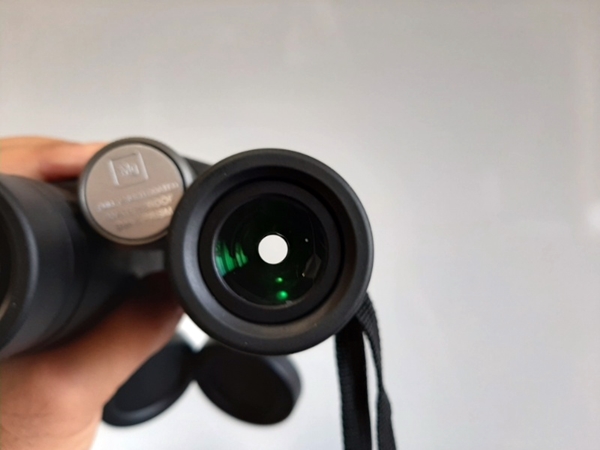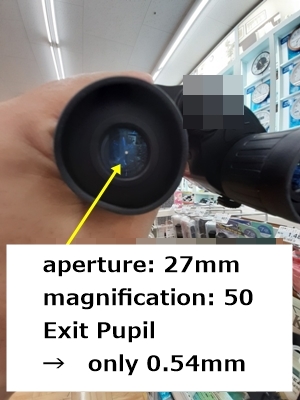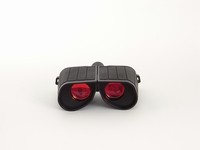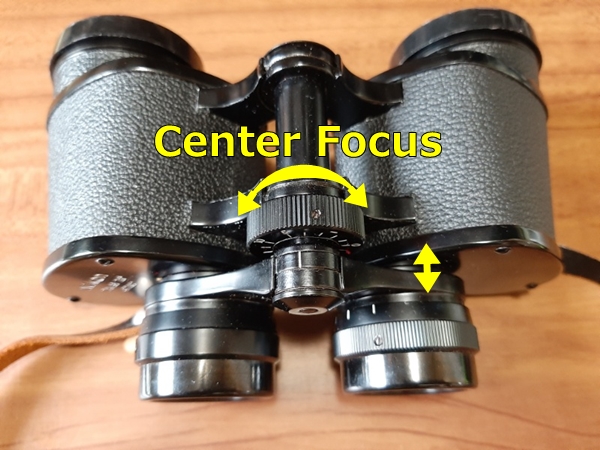Let me ask you a question: Do you think the following are true or false?
Binoculars that are capable of zooming are the best. (T/F)
Ruby-colored objective lenses are superior. (T/F)
Focus-free or auto-focusing binoculars enable us to focus automatically. (T/F)
Since the answer to all of the above is false, choosing binoculars based on these features is the last thing you want to do.
I always feel sorry for the folks who have bought binoculars based on those criteria. With a little more knowledge, I’m sure they would never choose such an inferior pair. Let me explain why you should NOT buy these types of binoculars with some pictures.
Contents
Magnification that is too high causes many problems
Magnification that is too high causes many problems.
The magnification range of decent binoculars is usually from 5x to 10x. If the magnification is over 15x, the retailer is probably trying to deceive you.
I understand that people want to see something or someone clearly from far away. You do indeed need high-powered binoculars to enlarge an object, however, more power causes more problems.
Mainly, your image will be shakier, blurrier and darker; Also, your field of view will be narrower.
Let’s take a closer look at each of these issues.
A shakier image
You should not underestimate the annoyance of binocular shake. It cannot be completely avoided unless the binoculars are mounted on a tripod. The bottom line is how much shake you are willing to put up with.
In my experience, binoculars with up to 6x magnification have minor shake issues that can be ignored.
7x and 8x magnifications are usually still ok.
However, when you get up to 10x magnification it becomes very difficult to hold them steady even if you control your breathing.
The shakier image prevents us from seeing details in the field of view. It is unlikely that what you cannot see with 8x magnification will be seen with 10x magnification because of the more pronounced shake.
In terms of shake, I recommend to those buying their first pair of binoculars to choose 8x or less.
A dark, blurry image
The definition of the binoculars largely depends on the aperture (the diameter of the objective lenses). The larger the aperture, the higher the definition.
Using this optical principle, the definition doesn’t improve even if the binoculars have a high
magnification. On the contrary, the image becomes dark and blurry.

Looking at pictures on a newspaper with a magnifier, you will see enlarged dots instead of a higher definition picture. This is similar to the effect of using cheap binoculars with high magnification.
The brightness number is the square of the exit pupil
Holding binoculars about 30cm away from your eyes and looking through the ocular lenses, you can see bright circles in the middle. These are called the exit pupil. The diameter of the exit pupil can be calculated as follows:
Aperture(mm) ÷ Magnification = Exit Pupil(mm)
Exit Pupil(mm) × Exit Pupil(mm) = Brightness
For example, 7×42 binoculars have 6mm of the exit pupil, which means its brightness is 36.

As you may already notice, the lower the magnification gets, the brighter the image becomes. Indeed, you need an appropriate magnification to see something far away, however, too high magnification will produce a dark image.
A narrower field of view
High magnification binoculars give you a narrow field of view, which means you will spend more time looking for your target. If you want to see someone or something that is moving quickly, it is almost impossible to find the object with a narrow field of view.
I recommend beginners choose a pair of binoculars with a field of view of at least 7 degrees.
For these reasons, binoculars that are too high-powered have a negative impact on the image because of shakiness, lower definition and brightness, and a narrow field of view.
I have found ads for binoculars in Japan that claim to be 100x magnification. I assume many people were deceived by this due to their lack of knowledge about binoculars.
For the past decade, with Hinode Optics, I have been enlightening Japanese consumers not to be deceived by magnification numbers alone. Let’s appreciate the advantages of low-powered binoculars more.
Zoom Binoculars are useless
Zoom lenses have come into wide use for digital and video cameras. They allow you to view either a wide area or zoom in to a specific area for a closer look.
However, I dare to say, zoom binoculars are useless. I know that one famous Japanese manufacturer tried hard to develop the ultimate zoom binoculars but their work turned out to be in vain.

Zoom in from 10× to 50×

A zooming function requires several lenses between the objective lenses and ocular lenses, where there are already prisms. Thus, the optical design becomes so complicated that the image gets worse.
Besides, if they can zoom in from 10x to 30x, magnification becomes too high. I’ve already mentioned the adverse effects of overpowered binoculars.
This is why almost all zoom binoculars fall short of expectations.
Ruby coating: what for?
Interestingly, bad quality binoculars sometimes have this feature. Overpowered binoculars often have the objective lenses coated in a flashy red.

Some kind of coating is needed to improve light transmittance. Without it, the light coming through the binoculars would lose about half of its luminance by the time it reaches your eyes.
There are several levels of coatings. To reduce reflection, thin layers of coating on the lenses are necessary.
However, the coating called “Ruby coating” does not improve light transmittance. It also has a negative effect on the color balance of the image. Generally speaking, looking through the ruby-coated lenses, you can see a bluish image that looks very unnatural.
It is often believed that ruby coating plays an important role to protect our eyes from infrared light, which is helpful in military use.
However, there is no foundation for this. The normal coatings help only visible light pass through the lenses. You do not have to worry about infrared light.
Focus-free or auto-focusing binoculars are just ones without a focusing wheel
When I first saw the sales pitches for “focus-free” or “auto-focus”, I thought these swindlers were geniuses.
Focusing is vital in getting a sharp image when using binoculars. Since everyone has different eyesight, people need to focus with a focusing wheel.

Binoculars without a focusing function are like cars without steering wheels. To make matters worse, binoculars without a focusing wheel and a diopter setting might look more simplified and stylish, as they do not have these essential extra parts.
Focus-free or auto-focusing sounds as if the device is special and can help the users focus automatically, which beginners think is great. However, it is just a gimmick that does not work.
Would you call a car without a steering wheel Steering-free? Of course, not!
What should beginners do?
The first thing beginners should do is to avoid the binoculars types I have mentioned above. No matter how attractive they look, you should NOT buy them.
Good quality binoculars often look ordinary. They have modest magnification without the zooming function. The color of objective lenses should not look flashy. They have a focusing wheel so that you can focus manually.
In the price range below $50, there are not many nice binoculars, which reminds me of the proverb “Penny wise and pound foolish.”
If you want to learn more about choosing good quality binoculars, please read “5 Steps To Choosing Binoculars: A beginner’s Guide”.
Don’t be deceived, be wise.
Summary
There are four types of binoculars you should not buy: over-powered binoculars, zoom binoculars, rubycoated binoculars, and focus-free or auto-focusing binoculars.
Over magnification affects the image negatively. It will be blurrier, darker, and the field of view will be narrower which makes it harder to track an object. Also, the shaky image can be unbearable.
Good quality zoom binoculars are too difficult to make. One problem is the high magnification causes the same issues as above.
Lens coatings improve light transmittance. Unfortunately, the flashy, so-called “ruby coating” on objective lenses, are not helpful in transmitting light.
Focus-free or auto-focusing binoculars lack a focusing wheel and a diopter setting, with which you will never be able to get a sharp image.
Most lousy binoculars have some of the features above. With a little knowledge, you can easily avoid buying terrible binoculars. On this website, there is much more information to help newcomers enjoy their binoculars.
